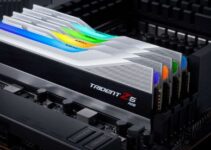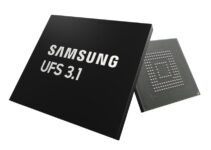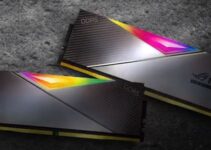samsung Annual Report: Samsung Unveils Exciting Details on GDDR6 Plus, HBM3, DDR7, and DDR6 RAM Generations
In its recently released annual report, Samsung shared updated information on its latest technological advancements, including GDDR6 Plus, HBM3, and the upcoming DDR7 and DDR6 RAM generations.
Computer base managed to obtain comprehensive insights into the specifications of these cutting-edge memory technologies, shedding light on the Korean giant’s breakthrough developments.
Intel’s Alder Lake platform, now in its twelfth iteration, is already embracing the latest DDR5 RAM generation.
While there have been challenges with parts supply, manufacturers are actively working to address the issue of inventory scarcity.
Samsung’s DDR5 RAM is set to reach speeds of approximately 6400 Mbps, with overclocking capabilities pushing it beyond 8500 Mbps, promising enhanced performance for users.
With DDR5 now available, memory manufacturers are gearing up to introduce their first modules boasting speeds of up to 7000 Mbps.
As the technology continues to evolve, further improvements are expected over time. Additionally, the next generation of DDR6 RAMs is currently under development, poised to eventually replace DDR5.
Despite the excitement surrounding DDR6, market adoption is not expected until at least 2025-2026, considering that DDR5 modules have only recently become available.
The anticipated readiness of DDR6 RAMs in a few years is influenced by the dominance of DDR4 RAM as the prevailing standard for computer platforms over the past six years.
Some RAM manufacturers have already launched DDR5 modules with impressive speeds of 12,000 Mbps, indicating the industry’s drive for faster and more capable memory solutions. DDR6 RAMs are projected to achieve a maximum data transfer rate of up to 20 Mbps.
Samsung has also revealed its plans to replace GDDR6 chips with the faster GDDR6 Plus memory standard in the near future. This remarkable advancement is expected to find its application in the upcoming generation of GPUs, boasting speeds of up to 24 Gbps, significantly increasing bandwidth and performance.
These cutting-edge memory chips will enable graphics cards equipped with 384, 352, and 320-bit interface buses to achieve bandwidths of over 1 terabyte per second, a substantial improvement compared to the maximum bandwidth of 768 Gbps found in 256-bit GPUs.
Samsung’s continuous advancements in memory technology promise to reshape the landscape of computing, offering faster and more efficient solutions to cater to the demands of the modern world.
The GDDR7 graphics memory was discussed in the other section of this article, and it is anticipated to enhance data transfer speed to 32 Gbps.
It can supply 1TB of capacity thanks to a GDDR7 chip with a 256-bit interface bus and a transfer speed of 32 Gbps. This value will increase to 1.5 and 2 terabytes per second, respectively, if the GUI is increased to 384 and 512 bits.
Last but not least, in the second quarter of 2022, the Korean industry titan plans to start mass producing HBM3 memory.
The next-generation HBM memory standard will be the top option for next-generation CPUs and data cards for data centres. Also recently demonstrated were SK Hynix’s HBM3 modules, it should be noted.
Read More:



